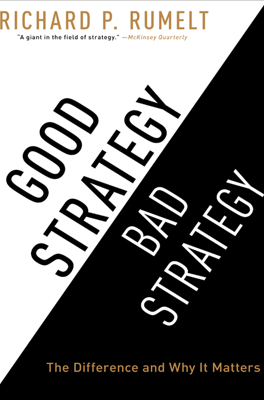The Kernel of Good Strategy
Good strategy derives from a clear structure known as the kernel, which is essential for creating, evaluating, and describing strategy effectively. The kernel comprises three integral components:
- A Diagnosis: This clarifies the nature of the challenge, reducing the complexity of reality into a manageable perception by emphasizing critical aspects. A well-articulated diagnosis helps understand the situation and points toward potential strategic actions.
- A Guiding Policy: This defines the approach to deal with the obstacles outlined in the diagnosis. It sets a path and narrows the focus, channeling efforts in specific directions without dictating exact actions, thus providing strategic direction.
- Coherent Actions: These are deliberate steps designed to implement the guiding policy in a coordinated manner, ensuring that all actions complement and reinforce each other, increasing the overall effectiveness of the strategy.
Effective Strategy Through Real-World Examples
- In medical practice, a strategy may involve diagnosing a disease, deciding on a treatment plan (guiding policy), and prescribing specific treatments (coherent actions).
- In foreign policy, strategists might analyze a leader’s behavior through historical analogies to form a guiding policy, which is then executed through a mix of diplomatic, economic, and military actions.
- In business contexts like Starbucks in 2008, the diagnosis might address whether issues are due to market saturation or deeper competitive disadvantages. Depending on this diagnosis, the guiding policy could involve targeting new markets or overhauling the product lineup.
The Real Challenges and Actionability
Strategic diagnosis not only simplifies the complex realities but also identifies areas where strategic action can leverage outcomes. For example, in education reform, focusing on organizational structure rather than socio-economic factors might offer more actionable strategies.
The guiding policy, while providing a general direction, must be backed by coherent actions that are practical and directly address the diagnosed challenges. These actions should be interconnected, ensuring they support and don't contradict each other, leveraging collective force towards the strategic objective.
Conclusion on Strategy Execution
Strategy requires diagnosing the situation accurately, formulating a guiding policy that addresses this diagnosis, and executing with coherent actions that are aligned and synergistic. The kernel framework emphasizes simplicity and focus, steering clear of complex corporate jargon and uncoordinated efforts, aiming for clarity and effectiveness in strategic endeavors.
